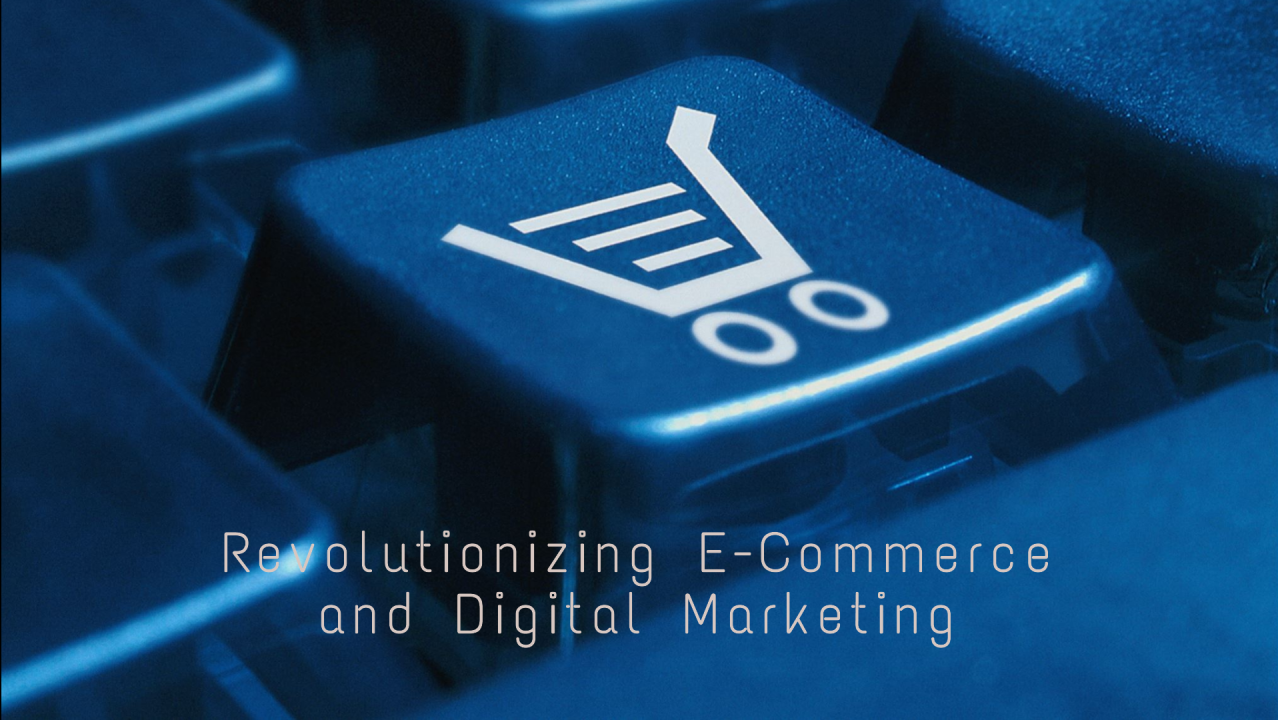The e-commerce and digital advertising landscape is continuously evolving, driven by technological advancements and changing consumer behaviors. As we look to the future, several key trends and innovations are shaping the way businesses approach online retail and marketing. Here’s what you need to know about the future of e-commerce and digital advertising.
1. Rise of Artificial Intelligence (AI) and Machine Learning
Overview: AI and machine learning are transforming e-commerce and digital advertising by enabling more personalized and efficient customer experiences.
Trends:
- Personalized Recommendations: AI algorithms analyze user behavior to provide tailored product recommendations, enhancing the shopping experience.
- Chatbots and Virtual Assistants: AI-powered chatbots offer real-time customer support and assist with inquiries, improving service efficiency.
- Predictive Analytics: Machine learning models predict customer behavior and preferences, helping businesses make data-driven decisions.
Example: Online retailers use AI to recommend products based on past purchases and browsing history, leading to higher conversion rates.
2. Growth of Mobile Commerce (M-commerce)
Overview: Mobile commerce is becoming increasingly important as more consumers shop and make purchases via their smartphones and tablets.

Trends:
- Mobile-Optimized Websites: Businesses are prioritizing mobile-friendly websites and apps to ensure a seamless shopping experience.
- In-App Purchases: Mobile apps offer integrated shopping experiences, allowing users to make purchases without leaving the app.
- Mobile Payments: The use of digital wallets and mobile payment systems, such as Apple Pay and Google Wallet, is on the rise.
Example: Brands are investing in mobile app development to provide a more convenient shopping experience and leverage features like push notifications and location-based offers.
3. Evolution of Digital Advertising
Overview: Digital advertising is continuously evolving, with new technologies and strategies emerging to capture consumer attention and drive engagement.
Trends:
- Programmatic Advertising: Automated ad buying processes use algorithms to target audiences more precisely and optimize ad spend.
- Influencer Marketing: Collaborations with influencers continue to grow, leveraging their reach and credibility to promote products and services.
- Video Advertising: Short-form and interactive video content are becoming more popular for engaging audiences and driving conversions.
Example: Brands use programmatic advertising to deliver personalized ads in real-time based on user behavior and preferences.
4. Integration of Augmented Reality (AR) and Virtual Reality (VR)
Overview: AR and VR technologies are enhancing the online shopping experience by allowing consumers to interact with products in a virtual environment.
Trends:
- Virtual Try-Ons: AR applications enable users to try on clothing, accessories, or makeup virtually before making a purchase.
- Immersive Shopping Experiences: VR environments provide a simulated shopping experience, allowing users to explore virtual stores and interact with products.
Example: Cosmetic brands offer AR tools that let customers see how different makeup products will look on their faces before buying.
5. Emphasis on Sustainability and Ethical Practices
Overview: Consumers are increasingly prioritizing sustainability and ethical practices, influencing e-commerce businesses to adopt more environmentally friendly and socially responsible practices.
Trends:
- Eco-Friendly Packaging: Brands are shifting to sustainable packaging options to reduce environmental impact.
- Transparent Supply Chains: Consumers demand greater transparency regarding the sourcing and production of products.
- Social Responsibility: Businesses are focusing on ethical practices and supporting social causes.
Example: Fashion retailers are adopting sustainable materials and transparent supply chains to meet consumer demand for eco-friendly products.
6. Increased Focus on Data Privacy and Security
Overview: As e-commerce and digital advertising involve collecting and handling vast amounts of data, ensuring data privacy and security is becoming more critical.
Trends:
- Compliance with Regulations: Businesses must adhere to data protection regulations, such as GDPR and CCPA, to safeguard user information.
- Enhanced Security Measures: Implementing robust security protocols and encryption techniques to protect sensitive data from breaches.
Example: E-commerce platforms are investing in advanced security features to protect customer data and build trust.
7. Rise of Social Commerce
Overview: Social commerce integrates social media platforms with e-commerce, allowing users to shop directly through social media channels.
Trends:
- Shoppable Posts: Social media platforms like Instagram and Facebook enable users to purchase products directly from posts and ads.
- Social Media Integration: Brands are leveraging social media features, such as live shopping and influencer partnerships, to drive sales.
Example: Brands use Instagram’s shoppable posts feature to allow users to purchase products directly from their feed.
8. Growth of Subscription-Based Models
Overview: Subscription-based e-commerce models are gaining popularity, offering consumers convenience and personalized experiences.
Trends:
- Subscription Boxes: Curated subscription boxes deliver products on a recurring basis, providing a personalized experience.
- Membership Programs: Brands offer exclusive content, discounts, or products through membership programs.
Example: Beauty brands offer monthly subscription boxes with curated skincare and makeup products tailored to individual preferences.
As the e-commerce and digital advertising landscape continues to evolve, staying ahead of these trends and innovations will be crucial for businesses looking to succeed in the digital marketplace. Embrace emerging technologies, adapt to changing consumer behaviors, and focus on delivering exceptional experiences to drive growth and engagement.











